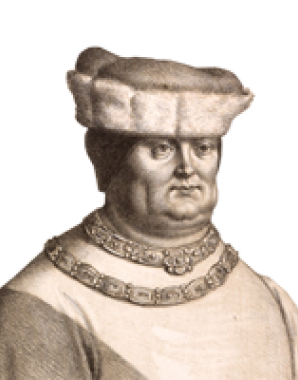Leopold III: the founder of the Leopoldine line
Leopold III and his elder brother Albrecht decided to divide the Habsburg territories between themselves. This led to a weakening of the dynasty as a whole, for in the following generations the two branches thus created were mainly to align themselves in opposition to rather than in concert with each other.
Leopold was the youngest son of Duke Albrecht II and Joan of Ferrette. He was just seven years old when he lost his father and became a ward of his eldest brother and overall head of the dynasty, Duke Rudolf IV. The latter sent Leopold when he was still a youth to represent the dynasty in the newly acquired county of Tyrol in order to preserve the interests of the family.
After the early death of Rudolf in 1365, the fourteen-year-old Leopold took over the regency of the Habsburg dominions together with his elder brother Albrecht III, who had precedence as the head of the dynasty according to the Habsburg House Rule.
Soon, however, Leopold emancipated himself from his brother’s authority and demanded his portion of their father’s inheritance. With the Treaty of Neuberg signed on 25 September 1379 the two brothers agreed to divide their patrimony: the result was the creation of two lines with separate sovereign territories.
Leopold’s share included the Duchy of Styria (to which the Pitten Mark and Wiener Neustadt belonged at the time), the Duchy of Carinthia (at the time covering only present-day Lower Carinthia), the territories of Carniola and the Windic Mark (now amalgamated as the Duchy of Carniola) and the Habsburg portion of Istria and some scattered possessions in Friuli. Leopold also received Tyrol, where he had already gained experience of ruling, and the Swabian territories or Forelands.
In order to preserve the cohesion of the lines, reciprocal hereditary claims were agreed. Rules were also established regarding potential guardianships over offspring who were still minors in the event of their parents’ early death. In order to avoid the loss of any titles, all members of both the newly established lines were permitted to continue to bear the arms and titles of all the territories, whether they actually ruled over these or not.















